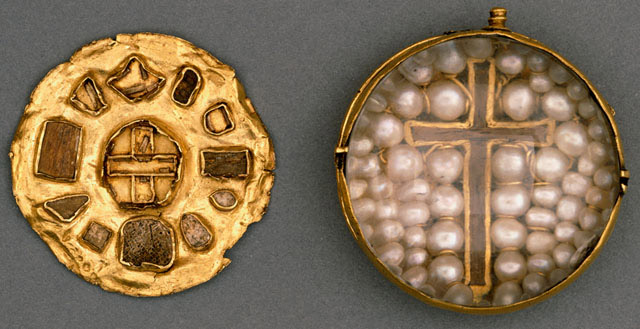Reliquary Pendant
The British Museum, London
Copyright © The Trustees of the British Museum

 Select the image to zoom
Select the image to zoom
The saints referred to in the abbreviated Latin inscription around its cover suggest that this reliquary is Scottish in origin. St. Andrew is the patron saint of Scotland; Fergus, lord of Galloway, was a benefactor of Holyrood Abbey, Edinburgh; St. Margaret was the queen consort to the Scottish king Malcolm III; St. Ninian founded the Whithorn priory, Galloway, in 397. St. Norbert of Xanten, also named in the inscription, was the founder of the Order of Regular Canons of Prémonstré. Considering that Whithorn priory was affiliated with the Premonstratensian order, this reliquary probably belonged to a bishop of Galloway in the late twelfth or thirteenth century, and reflects patterns of local devotion and religious affiliation.
The pendant is formed of a circular gold box with a base plate into which a number of different relics are set. A setting for lost fragments of the True Cross sits at the center of the plate. The cover of the reliquary is decorated with a paving of pearls sewn with gold wire around a miniature wooden cross. A dome of rock crystal covers this setting, and the whole pendant was locked together by a nut screwed down from the top. The relics themselves would have been hidden from view, but the wooden cross on the front indicates the holy fragments held within. Two rings on either side of the pendant suggest that it was originally suspended by a chain. Although it was not necessarily worn, it may have been hung above a shrine or an altar.




